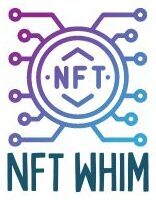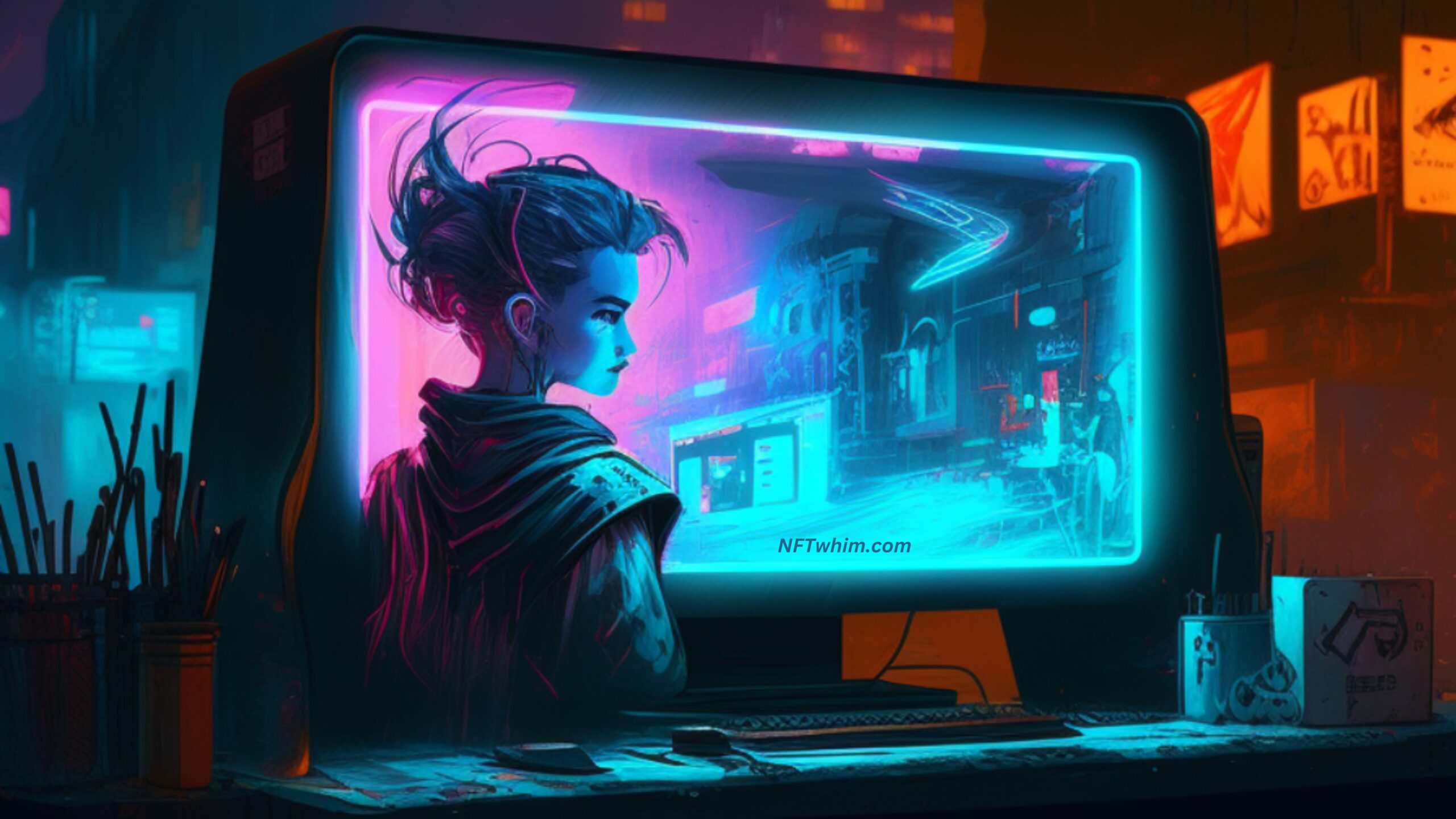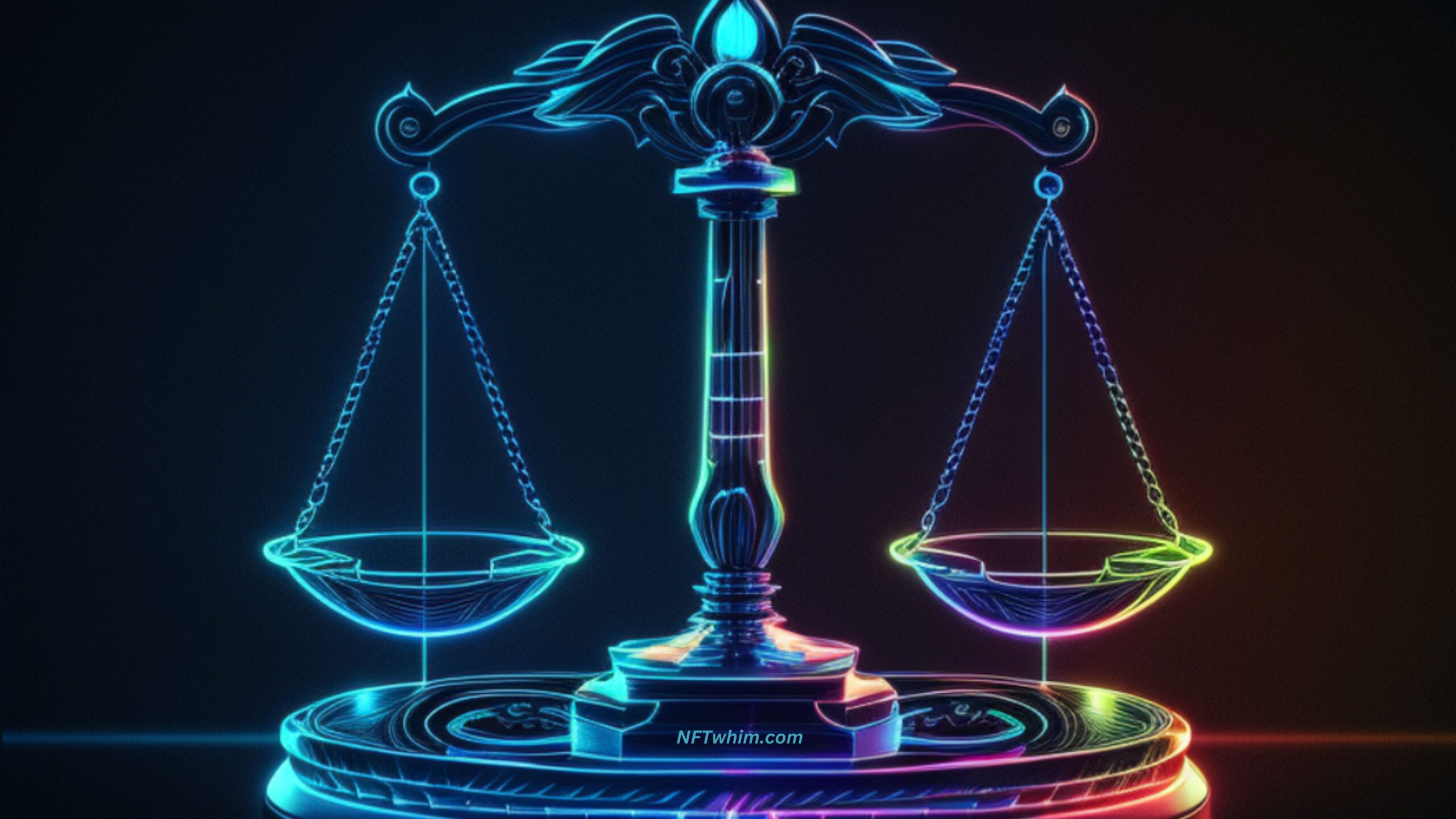The world of non-fungible tokens (NFTs) has opened up a new world of possibilities for creators looking to monetize their work. From digital artists to musicians, the ability to earn royalties and revenue streams from NFTs is an enticing possibility. But understanding how those royalties and revenue streams are generated can be tricky. This article will provide insight into what you need to know about earning money through your NFT creations.
For many creatives, the idea of having control over their art and music while still receiving monetary compensation is incredibly exciting. With NFTs, it’s now easier than ever before for content creators to gain ownership and generate income through sales or royalty payments without relying on third parties like record labels or publishing companies. However, there are some important things that all creators should consider when getting started with NFTs in order to make sure they’re creating a sustainable revenue stream.
From understanding smart contracts and token economics, to learning about different types of marketplaces available for trading NFTs – this article will walk you through everything you need to get started making money as an NFT creator. Whether you already have experience in crypto markets or not, by the end of this piece you’ll have the knowledge required for success with your own creations! So let’s dive in and explore what you need to know about understanding royalties and revenue streams for NFT creators!
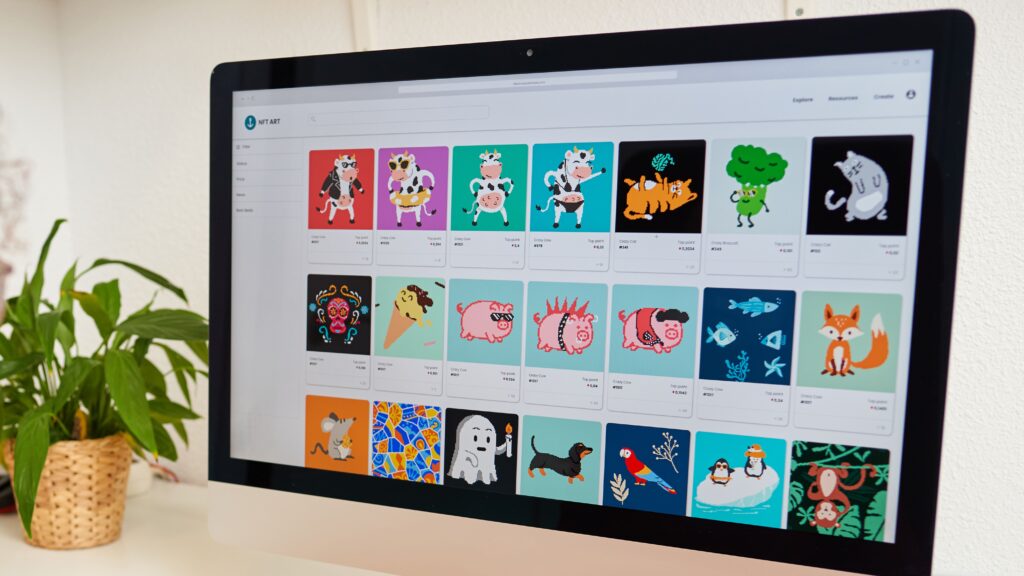
What Are Non-Fungible Tokens?
Non-Fungible Tokens (NFTs) are taking the world by storm! They have been described as revolutionary, and they certainly could be. But what exactly is an NFT? Let’s dive into the nitty gritty of this exciting new technology to learn more about how it works.
An NFT is a type of crypto asset that exists on a blockchain. This means that each token has its own unique characteristics and can exist in multiple copies or versions with different values tied to them. It also means that no two tokens are exactly alike – even if they share some similarities, each one will still have distinct features that make it stand out from other assets. The most common form of NFTs are digital artworks, but there are also physical collectibles like sports cards and action figures available as well. All these items are bought and sold through specialized marketplaces such as OpenSea, Decentraland, Rarible, and others.
Unlike traditional currencies which rely on central banks to control their value, NFTs operate outside of any government or financial institution’s purview. As such, their prices fluctuate according to supply and demand rather than being set arbitrarily by an authority figure. Additionally, since these tokens live permanently on the blockchain network where transactions cannot be reversed or altered without consensus from all users involved – buyers can rest assured that their purchases remain securely stored for years to come.

How Do NFTs Generate Revenue Streams For The Creator?
NFTs have opened up a new world of revenue streams for creators. NFT sales generate income directly from the sale of digital art, music, and other forms of intellectual property. Creators can also receive royalty payments through platforms that feature their works. This allows them to monetize their creations in ways never before possible.
Creators can list their works on a digital platformof their choice and set prices at which they are willing to sell or license those works. Collectors can then purchase these works with cryptocurrency and own the rights associated with it. A percentage of each sale goes to the creator as royalties, providing an additional source of income that was not available until recently.
Through this innovative technology, creators now have more control over how they distribute and market their work while generating a steady stream of passive income through royalties and direct sales. As demand continues to grow for unique digital products, we can expect to see more artists taking advantage of NFTs to capitalize on opportunities that increase financial freedom.

What Is A Royalty Payment?
A royalty payment is a portion of income from an item or service which has been licensed out for use by someone else. The owner of the original content receives compensation based on a predetermined royalty structure, calculation method, and agreement with the licensee. This means that when you create your own digital asset or artwork as an NFT collector, you may be entitled to receive regular payments depending on its success and usage. Royalty income can add up quickly if your creation becomes popular due to incoming fees from each purchase or sale of your asset.
This is however of course dependent on that your NFT sells, and an NFT-sale is not always easily achievable.
Therefore, understanding the process behind royalty payments is essential for anyone looking to make money off their artworks through NFTs. It’s important to research different platforms thoroughly before making any decisions about where to list your creations so you get the best possible terms in regards to royalties and other benefits available within each platform’s agreements.

Types Of Royalties Paid To Creators
Creators of NFTs receive income from a variety of royalty types. These range from one-time fees to recurring payments over time, and can be structured in different ways depending on the type of work produced.
The three main categories of royalties paid to creators are:
- One-Time Fees – This is when an artist receives a single payment for their work, usually up front. This could include commissions or licensing agreements that pay out once the project has been completed.
- Recurring Payments – Creators may also receive ongoing payments based on usage or view numbers. For example, streaming platforms like YouTube often have revenue sharing structures where content producers get paid every time someone watches their video.
- Royalty Splits & Percentages – Royalties can also be split between artists and other parties involved in creating an artwork (e.g., collaborators). Royalty splits may follow certain percentages negotiated before any agreement is made for how much each person will receive as part of the total payout (e.g., 50/50).
In essence, there’s no “one size fits all” solution when it comes to creator payments–different projects require different approaches and understanding what works best for you is key to maximizing your revenues as a creator! With access to new technology and tools, such as blockchain-based platforms, creators now have more control than ever before over how they manage their rights and ownership — empowering them with greater financial freedom than ever before!
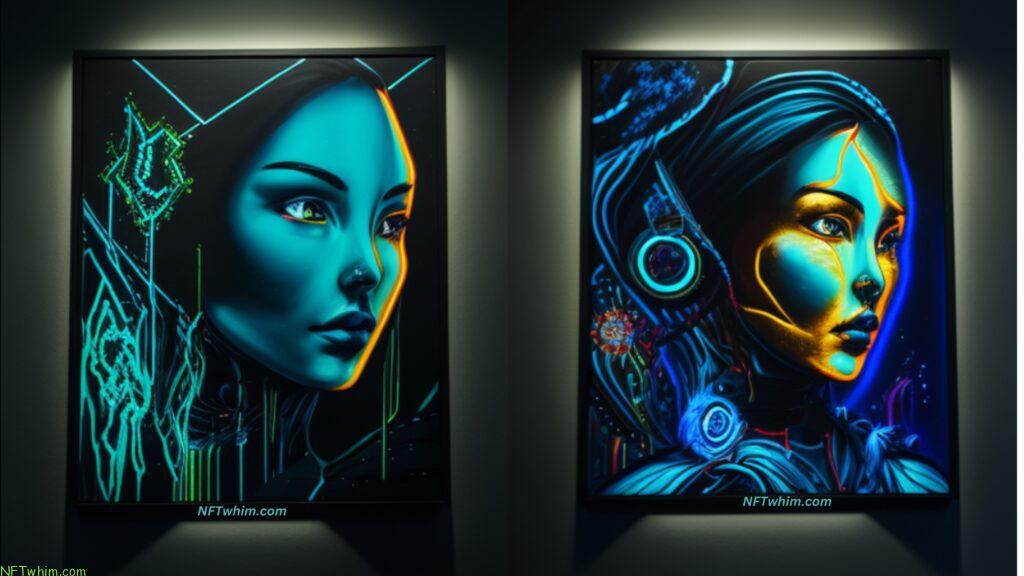
Impact Of Digital Platforms On Royalties
Digital platforms have had a huge impact on royalties and revenue streams for NFT creators. With the ubiquity of digital services, such as streaming music and video, it has become much easier to monetize content through these outlets – but often at the expense of traditional royalty models. By leveraging technology-driven platforms like YouTube or Spotify, artists can create more direct relationships with their audience and increase the amount of money they can make from their creations.
However, this shift in royalty structure also comes with a downside: many digital platform providers take a large cut of profits generated by NFTs that utilize their service. These fees are taken out before any royalties go to the creator themselves, meaning that depending on how successful a piece is, there could be very little left over after costs have been paid off. This means that creators must carefully consider which platform will yield them the best return on investment when looking to capitalize on their work. Ultimately, understanding how different platforms affect royalties is key for maximizing earnings potential as an NFT artist.
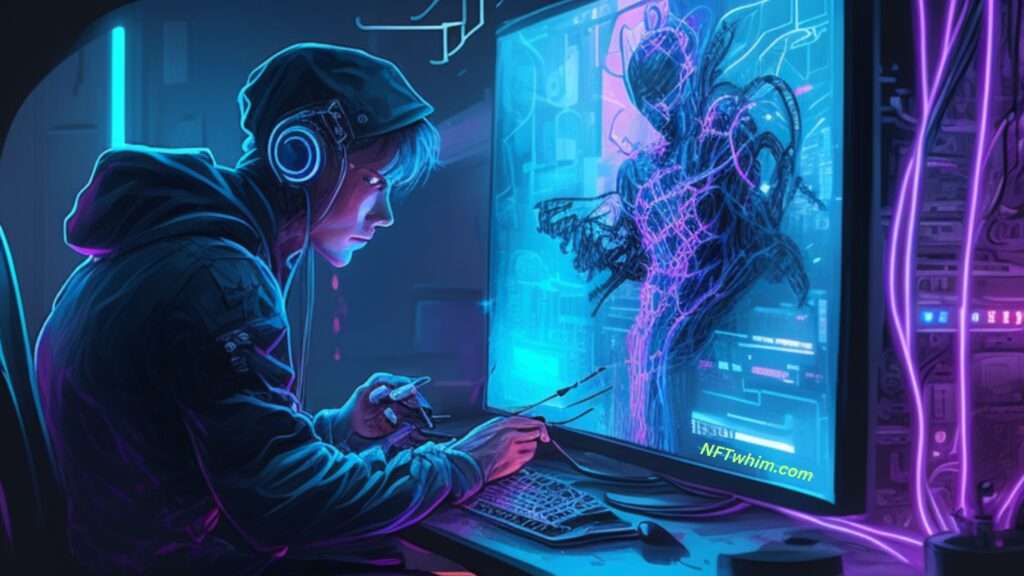
How To Receive Royalties As An NFT Creator
Receiving royalties as an NFT creator can be a challenging yet rewarding process. It’s important to know the ins and outs of how you receive your profits so that you can maximize your earning potential. To make this process easier, here are three tips on how NFT creators can better understand their royalty streams:
- Get educated on revenue models – Knowing what kinds of revenue models exist in the NFT space is key for understanding where the bulk of your earnings will come from. There are different types of revenue sharing agreements between platforms and creators, such as pay-per-view or subscription services. Researching these options and understanding which ones fit best with your content strategy is essential for maximizing profits.
- Utilize analytics tools – Analyzing data from past sales is one of the most effective ways to gain insight into which strategies work best for driving more sales and increasing profitability. Analytics tools allow you to track key performance indicators (KPIs) like engagement rates, viewer demographics, and average sale prices over time. This will help inform decisions about future content creation and marketing efforts that align with earning goals.
- Partner up with influencers – Working closely with influencers who have large followings helps increase visibility for your brand and product offerings, resulting in more eyeballs on your artwork and higher chances of success when it comes to generating revenues through sales commissions or sponsorships deals. Connecting with popular social media users also gives you access to valuable feedback and insights on current trends in the industry, allowing you to stay ahead of the competition while making sure there’s always something fresh coming out from your studio!
At the end of the day, becoming an NFT creator means taking ownership over all aspects related to pricing, distribution, promotion — everything necessary for running a successful business model within this emerging digital realm! With some research and strategic planning, anybody has the opportunity to turn their passions into profit by leveraging new technologies available today!
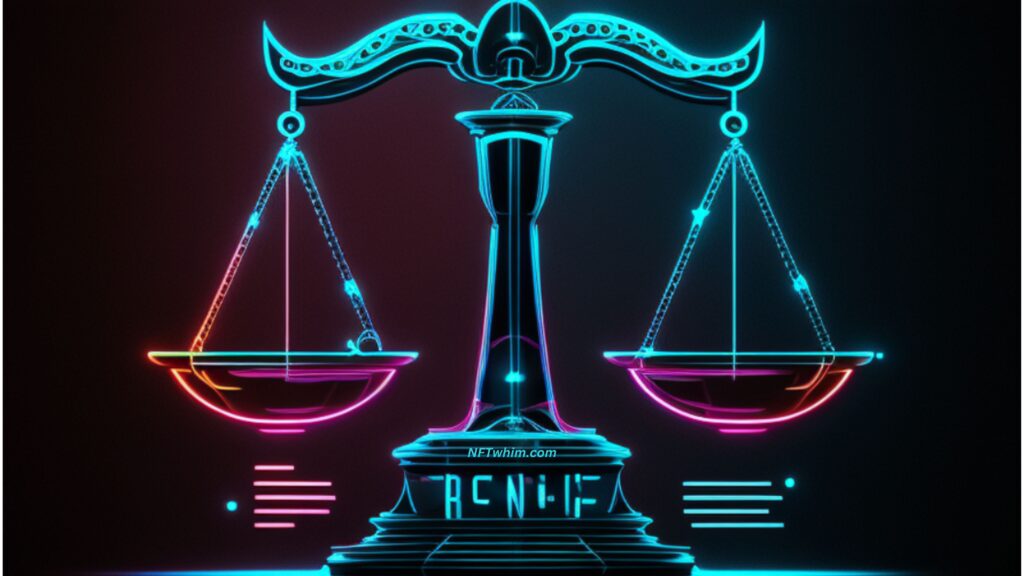
Understanding Copyright Laws And Ownership Rights
When it comes to understanding copyright laws and ownership rights, NFT creators have a lot to consider. Copyright law is the legal framework that provides protection for intellectual property such as music, visual artworks, designs, books, etc., by granting exclusive rights to those who create them. It’s important for NFT creators to understand these laws so they can protect their original works from being copied or used without permission. In addition, understanding copyright law helps ensure that any revenue earned through digital platforms like Ethereum is subject to taxation earnings.
It’s also essential for NFT creators to be aware of their ownership rights over their work. This includes knowing how and where your work can be shared online and what type of royalties may apply when someone wants to use your artwork in some way. By familiarizing themselves with all the rules regarding copyright law and ownership rights, NFT creators are able to take full control over their valuable creations while avoiding potential risks associated with not having a clear understanding of these concepts.
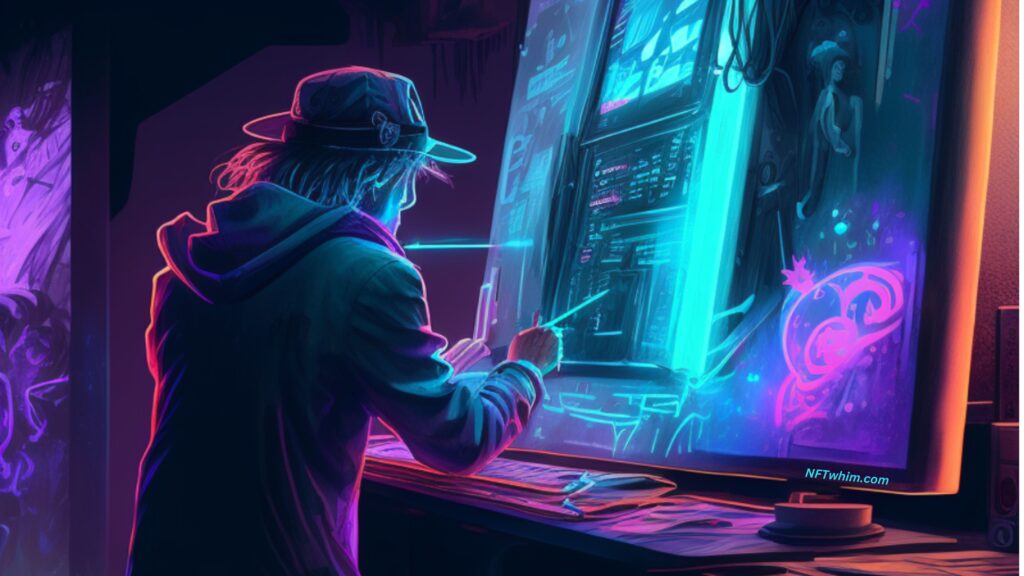
Benefits Of NFTs For Creators
NFTs offer creators a unique and valuable opportunity to monetize their content, as well as increase the value of their work. With NFTs, creators can benefit from increased brand recognition, greater creative freedom, and long-term financial rewards that weren’t previously available. Creators have more control over how they distribute and market their works, allowing them to tap into new markets or create additional revenue streams for themselves.
Moreover, with NFTs comes the potential for creators to receive higher monetary rewards than ever before. This is especially true in the digital space since there are no physical costs associated with selling an individual piece of art or collecting royalties on it. Additionally, because each token contains its own blockchain record, buyers can be sure that they’re receiving authentic original pieces directly from the artist without any middlemen taking a cut. Ultimately, this allows artists to maintain ownership of their creations while still being able to capitalize on the sale of their artwork — something that wasn’t possible until recently.
The advantages offered by NFTs give creators unprecedented opportunities when it comes to both artistic expression and generating income from their work. Through these tokens, artists now have access to powerful tools which allow them to maximize the value of their creations while maintaining complete autonomy over how they choose to monetize them.

Challenges Faced By NFT Creators
As NFTs open up new opportunities for creators, they also bring with them certain challenges. From protecting rights to monetizing their creations, these obstacles can be difficult to navigate without the proper guidance and understanding of the landscape. Here are some key challenges that NFT creators may face:
Creator Rights Protection: When it comes to digital assets, copyright protection is essential. Creators must ensure that their work is legally protected from theft or misuse by third parties. This means taking steps such as trademarking artwork, registering copyrights, or using watermarks or other measures to authenticate ownership.
Monetizing NFTs: Once a creator has taken steps to protect his/her content, there’s still the challenge of how best to monetize it. Depending on the platform used, this could involve setting a price point for individual works or offering subscription options in exchange for exclusive access. Additionally, creators should consider marketing strategies like leveraging influencers and utilizing social media platforms when promoting sales.
NFT Security Issues: Data breaches are always a risk when dealing with digital products and services. For example, if an artist creates something unique but fails to secure its data properly—such as leaving out two-factor authentication—it could put the asset at greater risk of being hacked and stolen. To prevent this kind of issue, creators need to use strong passwords and take advantage of any additional security features offered by the platform hosting their content.
Navigating these challenges can seem intimidating at first; however, with careful consideration and research into various methods available for protecting one’s work while also generating revenue streams through NFTs, creators can find success in creating their own amazing works of art!
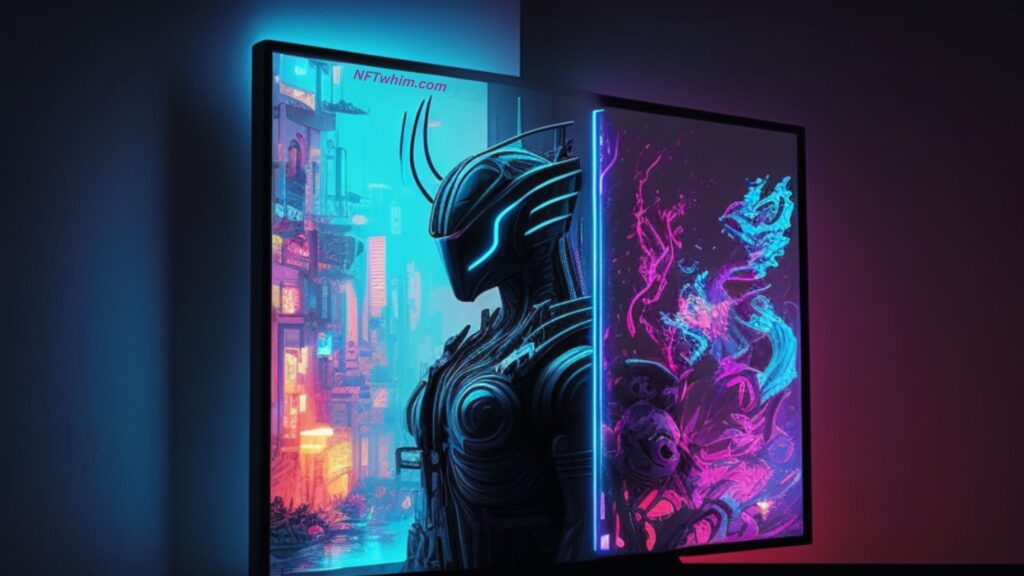
How To Maximize Profits From NFTs
NFTs can be incredibly lucrative for creators, provided that they understand how to maximize profits from their digital products. Here are some key strategies worth considering:
- Leverage royalty management tools: Royalty management tools enable NFT creators to directly receive royalties on each sale of their work without relying on a third party platform or marketplace. It is important to research different such services available and select one that best suits the creator’s needs.
- Invest in marketing: Marketing plays an essential role in building awareness about NFTs and driving sales – both online and offline. Creators should use targeted ads, social media campaigns, influencer collaborations, and other creative tactics to reach potential buyers effectively.
- Utilize smart contracts: Smart contracts ensure that all parties involved in an NFT transaction are treated fairly by automatically executing contractual obligations as soon as certain conditions are met. This helps protect creators’ rights while ensuring timely payments for successful transactions.
For those looking to make money through NFTs, it is important to consider these opportunities carefully before investing time or resources into creating them. Having a comprehensive strategy around profitability will help ensure success over the long term and create more meaningful financial outcomes for creators who are passionate about their artistry!

Strategies For Protecting Your Intellectual Property
Imagining your hard work and creative energy as a castle wall, surrounded by moats of protection – this is the best way to think about protecting your intellectual property. As an NFT creator, it’s essential that you’re aware of the strategies available for safeguarding yourself against potential infringement or theft of your digital works. Copyrighting, utilizing online security measures, and actively monitoring brand protection are just some of the ways in which you can protect your rights and keep control of how your creations are used.
When it comes to copyrighting, there are a few different options available depending on where you live. Most countries have their own respective laws regarding copyrights; researching what applies to you is key in ensuring that others cannot use or copy your creation without permission. You should also take advantage of technological advancements like blockchain technology when possible: not only does it help authenticate ownership, but permanent records make sure that any disputes regarding intellectual property get resolved quickly and efficiently.
It’s also important to be proactive when it comes to online security measures such as two-factor authentication (2FA) and strong passwords. This will help prevent unwanted access to accounts containing sensitive information related to your digital works. Additionally, protecting brands through trademark registration is another effective way of keeping control over how they’re used and presented across various platforms. By taking these steps now, you can create an ironclad defense around all aspects of IP associated with your NFTs – giving you peace of mind while allowing you pursue creativity freely!

The Future Of The NFT Market
Now that we have a better understanding of how to protect our intellectual property, it is important to look ahead at the future of the NFT market. With blockchain technology evolving and decentralized finance applications gaining traction, digital asset investing in cryptocurrency mining has become more popular than ever before. It is clear that NFTs are here to stay and will continue to shape the future of digital art.
The growth potential for NFTs appears bright as their use cases expand beyond gaming and entertainment into real world applications such as:
- Digital identity authentication
- Collectible trading cards
- Verifiable credentials
With its continued evolution, there is no doubt that the NFT market will remain strong due to its ability to provide creators with ownership rights over their content while being resistant to censorship or manipulation. Furthermore, investors can enjoy high liquidity rates when using them as an investment vehicle due to the fast-paced nature of crypto markets. As these trends become more apparent, it becomes even clearer that nonfungible tokens are going to be at the forefront of financial innovation in the foreseeable future.
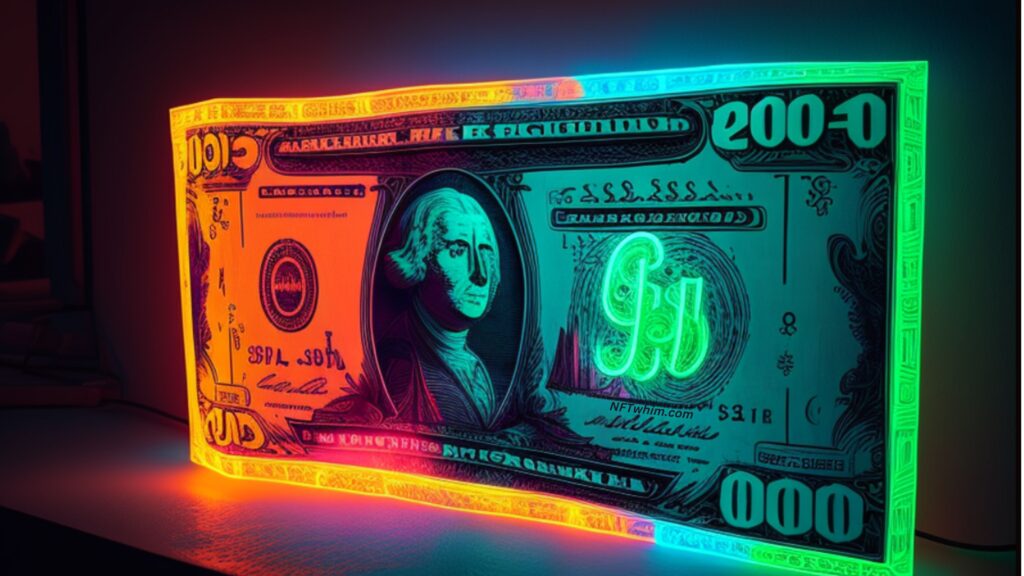
Tips For Managing Your Revenue Streams Wisely
As an NFT creator, understanding the different revenue streams available to you is key for financial planning and success. Managing your income wisely can help ensure that your hard-earned profits are used in a way that maximizes your potential. To do this, it’s important to understand how each of your various revenue streams works and track them closely.
Start by assessing all of the ways you generate income from your art or digital content. Once you have identified these sources, create a budget and set spending limits based on what percentage of your income should go towards bills, investments, savings, taxes and other expenses. Also be sure to keep a close eye on any fluctuation in the market so that when revenue dips, you know where best to cut back. You will also want to make wise investment decisions with part of your earnings such as putting money into stocks or real estate.
When managing multiple revenue streams, tracking profits can give you valuable insight into which areas need improvement or require more attention. This process requires patience but can provide invaluable knowledge about how well each stream is performing and highlight opportunities for improvement. Additionally, having clear goals for both short-term and long-term objectives will help guide your financial decision making and allow you to better manage cash flow over time. Ultimately though successful revenue management comes down to creating strategies tailored specifically to you and taking smart risks when necessary.
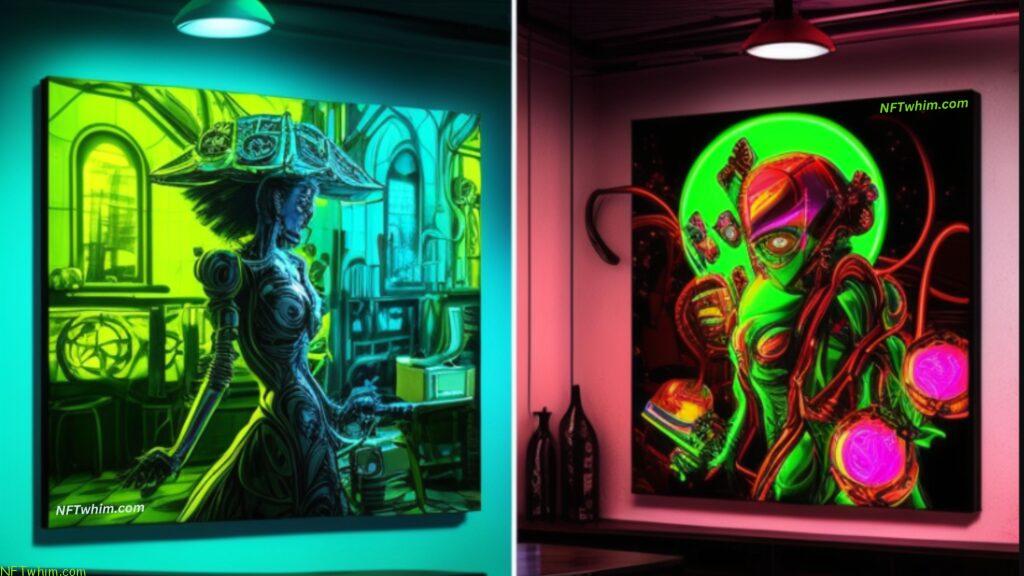
Considerations For Taxation On Earnings From NFTs
The concept of financial freedom is a tantalizing and alluring one for many individuals. When creativity meets technology, and the potential to earn money from it arises, there’s no wonder why NFT taxation has become an increasingly important consideration among creators. It’s vital that those who are looking to make money through their creative works understand the various tax considerations associated with their earnings.
From royalties to income taxes, understanding how these figures will be calculated can help ensure that you don’t face any unexpected costs down the line. For starters, royalty taxes need to be accounted for when dealing with digital artworks or other creative projects such as music tracks. This means keeping detailed records of your sales and revenue streams in order to properly report them on your taxes. Furthermore, if you’re generating significant amounts of income from selling NFTs then this too may also be subject to income taxation depending on where you live – though some countries offer certain exemptions for small-scale creatives — so it pays off to do your research into local regulations before diving in.
All in all, it’s crucial that creators consider their earning potential when delving into the world of NFTs so they can accurately account for any applicable taxes along the way. Doing so ensures that not only do authors receive fair compensation for their work but also remain compliant with relevant laws and regulations – which should always take precedence over any personal gain.

Exploring Alternatives To Selling Your Work As An NFT
As an NFT creator, you may be wondering if there are any alternatives to selling your work as an NFT. Thankfully, the answer is a resounding yes! There are several ways that creators can monetize their art without having to resort to selling it as an NFT.
One way to make money off of your creative works is through streaming platforms such as Twitch or YouTube. By setting up a subscription-based channel, viewers can help support the artist directly and provide them with steady income. Additionally, many streaming services offer ‘tip jars’ where viewers can donate small amounts of money for individual pieces of content they enjoy. This provides artists with another source of revenue from those who cannot afford larger purchases but still want to show appreciation for their work.
Creators also have the option of offering digital downloads or physical prints of their artwork in exchange for payment on websites like Etsy or Society6. These sites allow buyers to purchase high quality reproductions of the original artwork at more affordable prices than buying the actual piece would cost. For creators looking for further opportunities beyond simply selling their art, Patreon offers a platform on which creators can upload exclusive content in return for monthly payments from patrons – providing yet another avenue to earn money while producing new work.

Conclusion
NFTs offer a unique and exciting way for creators to monetize their work, but as with any venture there are risks associated. It is important to understand the different royalty structures and revenue streams available so that you can ensure your intellectual property is properly protected while maximizing profit potential. By taking the time to research these options, you can make an informed decision about whether or not selling your work as an NFT is right for you.
The benefits of selling work as an NFT are vast—from potentially larger payouts than traditional methods to improved control over content distribution and pricing. As always, it’s important to weigh all the pros and cons carefully before making a decision. With its growing popularity in recent years, understanding royalties and revenue streams for NFT creators has never been more critical.
Ultimately, if you decide that selling your work as an NFT is something that interests you, I encourage you to explore thoroughly what opportunities exist in this space. Doing so will help ensure that your artwork is well-protected and that you’re able maximize your profits from each sale made!
Robin
Frequently Asked Questions
What Are The Risks Associated With Selling Work As An NFT?
When selling work as an NFT, there are certain risks to be aware of. Market fluctuations, legal issues, fraud protection, and privacy concerns all need to be addressed in order for the transaction to go smoothly.
First and foremost is market fluctuation; NFTs can have volatile prices because they aren’t tied to any particular currency or asset. This means buyers must be prepared for prices that could drastically change from one day to the next. It’s important for creators to understand how this works so they can make informed decisions about when and how much to sell their work for.
Legal issues may also arise with NFT sales; copyright laws, intellectual property rights, taxation policies and more must be taken into consideration before a sale goes through. Fraud protection should also be considered – it’s important that sellers choose platforms which offer secure transactions and protect both parties involved in the exchange. Finally, privacy concerns should not be overlooked either; some platforms allow users to remain anonymous while still conducting transactions securely, but potential buyers will want assurances that their data won’t fall into the wrong hands during a purchase.
NFTs come with unique challenges compared to more traditional forms of art sales – understanding these risks ahead of time can help ensure smooth operations down the road. Doing due diligence now will pay off in terms of avoiding costly mistakes later on. With careful planning and preparation, creators can confidently enter the world of digital art trading without worry or hesitation.
How Can I Ensure That My Work And Intellectual Property Are Properly Protected?
As an artist selling work through NFTs, it is imperative to ensure that your intellectual property and creations are properly protected. It is essential to be aware of the potential risks associated with copyright infringement and other issues related to protecting one’s ownership rights in relation to their artwork. To avoid such risks, seeking the right advice on how best to protect oneself from these unfortunate situations should be a top priority for any creator looking to venture into this space.
Various options exist when it comes to safeguarding against royalty payments or other forms of income generated from NFT sales. Forming license agreements, registering copyrights, filing trademarks, and executing smart contracts can all be effective tools used by artists when handling their intellectual property rights. Furthermore, understanding the implications of various payment methods available in the NFT space will provide creators with a greater sense of security over their work and income streams derived from them.
In order for creatives to confidently establish themselves as successful owners within the ever-evolving digital realm, they must remain vigilant about ensuring their protective measures are up-to-date and adequately secured. Taking steps towards learning more about what legal documents need signing off before committing yourself in any form – whether it’s creating artworks or distributing them through NFTs – provides assurance that your hard work is not only respected but also rewarded accordingly.
Are There Any Limits To The Types Of Content That Can Be Sold As An NFT?
Are there any limits to the types of content that can be sold as an NFT? The short answer is no. Non-Fungible Tokens (NFTs) are digital collectibles, allowing anyone to buy and sell unique digital assets on a blockchain network. They’re widely used in creative industries like music, gaming, art and video.
When it comes to content types, anything is fair game for an NFT. Digital artworks have been popular among collectors since the beginning of the NFT boom, with many high-profile pieces fetching hundreds of thousands of dollars at auction. Video and music NFTs have also become commonplace recently, offering fans a way to directly support their favourite artists or creators by buying exclusive media just for them. Game asset NFTs have even emerged – allowing gamers to trade rare items within games like Fortnite or World Of Warcraft without having to leave the game itself.
The possibilities for what you can do with an NFT seem endless: from creating your own virtual world where players can explore new universes through specialised 3D environments; or giving away limited edition rewards such as tickets or merchandise tokens; all while feeling secure that your work remains yours alone and protected against infringement – this is truly liberating! As more people discover how easy it is to create and monetise unique digital assets using an NFT platform, they’re sure to come up with some amazing ideas too.
What Are The Benefits Of Selling My Work As An NFT Versus Other Options?
When it comes to selling digital content, creators have a choice of many platforms. But what are the benefits of selling your work as an NFT versus other options? There are several advantages that make this option particularly attractive for those looking to monetize their creations.
First and foremost, with NFTs, creators can receive payments in cryptocurrency instead of fiat currency. This allows them to take advantage of the potential price appreciation of crypto assets over time. Additionally, blockchain technology enables digital asset ownership and provides assurance that one’s creations remain unique. Digital scarcity is also provided by non-fungible tokens (NFTs), meaning buyers will know they own something rare and valuable due to its limited supply on the market.
Moreover, NFT holders benefit from greater control over how their work is used and shared because they are able to set rules around usage rights and royalties through smart contracts. And with no middleman taking commissions or fees – unlike traditional revenue streams such as streaming services – creators keep more of the profits generated by sales. All these factors combined make NFTs an appealing alternative for artists who wish to take full responsibility for their creative endeavors while still reaping financial rewards.
Are There Any Additional Fees Associated With Selling My Work As An NFT?
Are there any additional fees associated with selling your work as an NFT? This question is important to consider when determining if this sales platform is worth exploring. Selling digital art or creative content through a non-fungible token (NFT) can provide unique benefits for creators in terms of royalties and revenue streams, but understanding potential extra costs associated with the transaction process is just as critical.
For starters, it’s worth noting that many NFT marketplaces do charge commission fees on top of the sale price. Additionally, depending on the payment method used by the buyer, certain platforms may also pass along processing fees from third parties such as PayPal or Stripe. Although these extra charges are typically small compared to what you could earn from your sale – they should still be taken into account before you choose to sell your work through an NFT marketplace.
No matter what type of content you create, understanding all aspects of how much money you stand to make off each sale will help ensure that you get the most out of your hard work!
Author: Robin Olsson
Author Bio: I’m Robin and on this website, I share everything I’ve learned since getting into NFTs in 2021. I have a background in research and I’ve been in crypto for several years. You can read more about me here.
